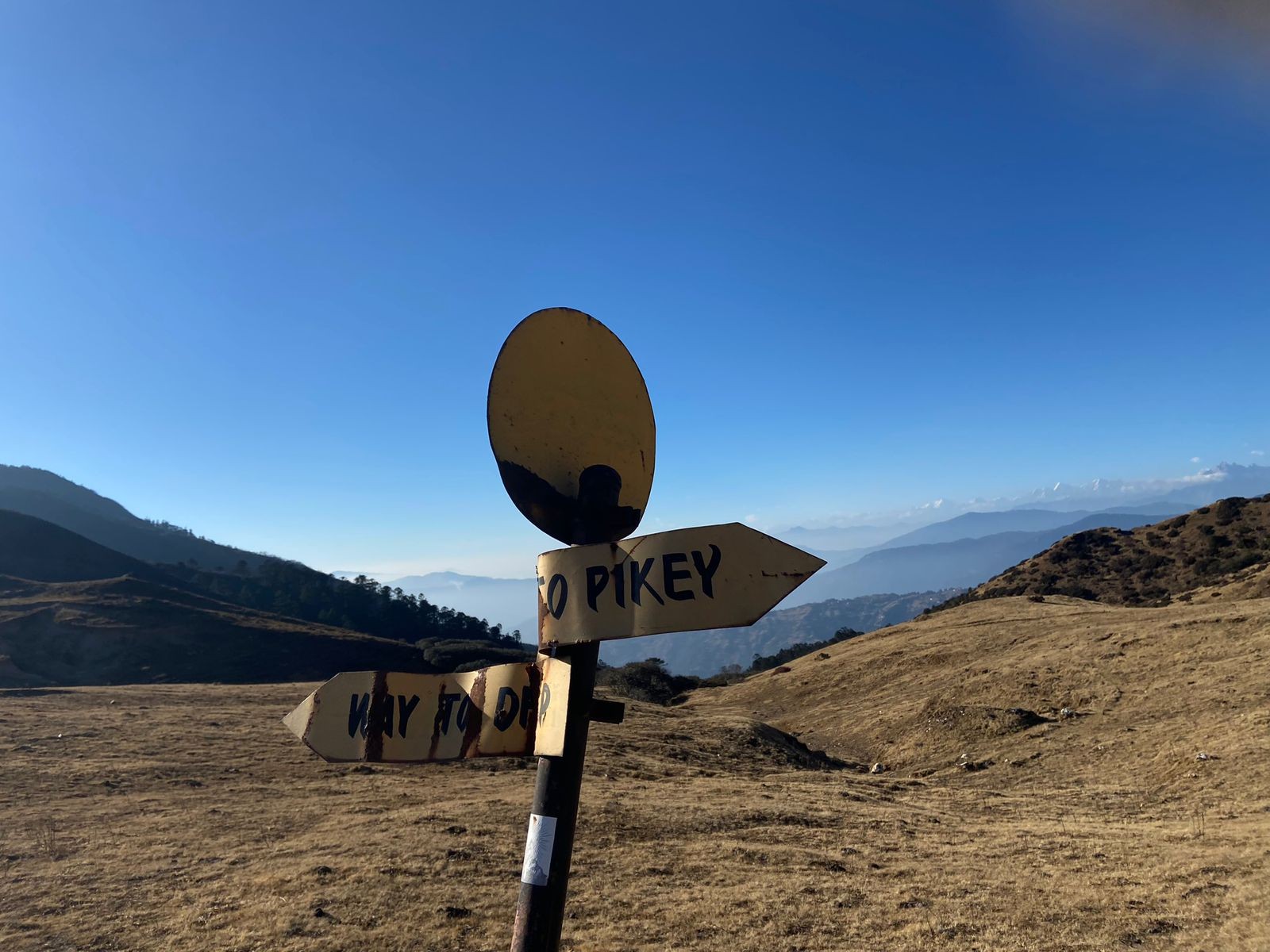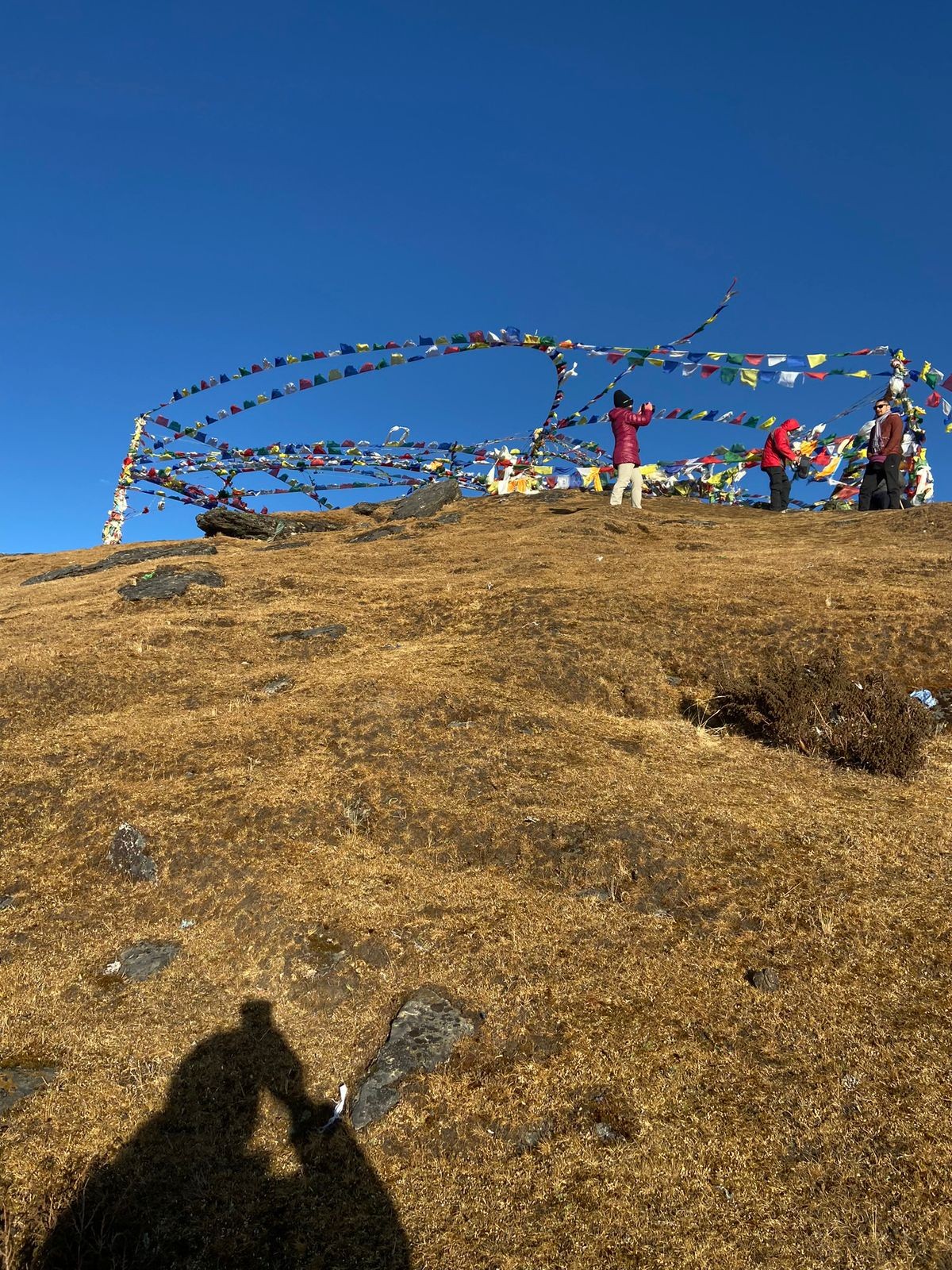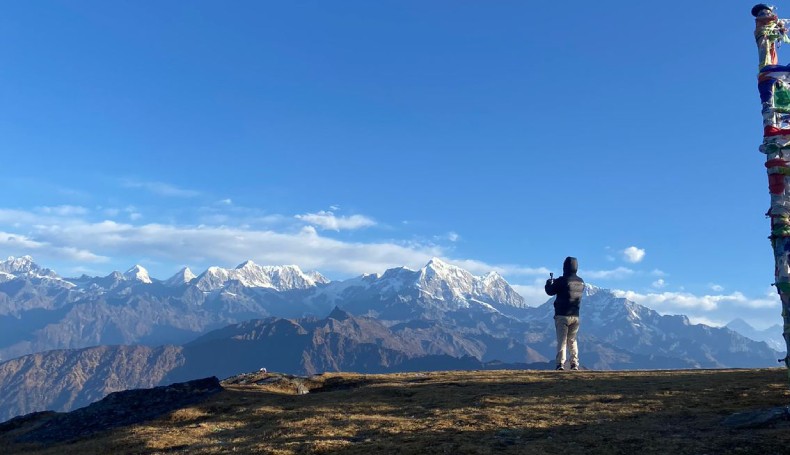What is Trekking and how it is different from climbing and hiking?
Trekking lies between hiking and climbing. Climbing is strenuous hiking is easier and trekking is neither tough nor easy. However, trekking also can be categorized into three different types: easy, moderate, and strenuous. It is meant to say dat trekking also can be strenuous according to the level of difficulty.
Trekking is a walk in the mountain. Trekking is for witnessing mountain views, going through the various settlements and flora and fauna, and being an integral part of nature in the wild. Various species of floras and faunas, breathtaking mountain views, walking into the wild, stunning sunrises and sunsets, and experiencing local culture are the primary highlights of trekking.
Trekking, fundamentally, can be of two types. They are camping trekking and tea house trekking. A few decades ago, camping trekking would be very popular among trekkers but now tea house trekking is considerably preferred by the people. However, the most natural form of trekking is camping.
Certain procedures are to be completed to do trekking. Trekkers must join a valid travel company and have attained the required permits for a particular trekking trip.
How difficult is trekking in Nepal?
Nepal offers all three categories of trekking but the difficulty level depends on what category of trekking trip you choose. However, you will encounter a wide range of ups and downs during a trekking trip. Normally, a trekker has to walk in the mountain at least for 6-7 hours. Relatively, as the ascent rises, the more difficult the trekking will be. You will, normally, begin your trek in the morning at around 8 am after breakfast, tan, take a lunch break in the afternoon for an hour, and continue walking till 4-5 or sometimes, till 6 pm. However, some trekking trips are really easy you only have to work for 3-4 hours a day not getting much elevation. Therefore, choose a trekking trip to suit you're interest and stamina.
Is it safe to travel to Nepal?
Travelers have always found Nepal as a safe destination for various types of holidays. Previously, there was a war between the Nepal Government and Maoists for more than a decade but right now, everything is settled peacefully and a new constitution has been promulgated. There is no domestic violence in Nepal at the moment.
Similarly, there is no threat for solo and female travelers traveling in Nepal. Security forces have been installed in every trekking and tour route. Moreover, there is internet and phone call access in every corner of the mountain region of Nepal. You can make an instant call to avoid any unforeseen circumstances. Also, an instant rescue is carried out as soon as you report to the concerned officials in case of danger. Therefore, Nepal is safe for traveling.
What are the minimum and maximum duration for trekking in Nepal?
Even for the shortest and easiest trek, trekkers have to allocate 3-4 days and the longest trekking in Nepal will be 22 days. The easier and shorter treks will be near the cities and the longer ones will take you to some of the most remote areas of Nepal crossing the adventurous high passes. So, you can plan a trekking trip according to the length of you're holiday. Also, you ask your travel partner to set the duration of trekking letting them know how many days you have.
Do I need some sort of training before going to Everest Base Camp or other trekking areas in Nepal?
Training is not required to go to Everest Base Camp, however, some other challenging trekking need some basic training. You are required to prepare yourself by boosting you're stamina by walking at least 5-7 hours at a higher elevation above 4000m for Everest Base Camp Trek and for other strenuous treks like the Everest Three Passes Trek, trekkers are required to learn very basic skills of handling crampons and ice ax. Otherwise, there is now such a trekking trip in Nepal that needs special training.
How safe is the water to drink in the mountain?
It is not recommended to drink water from the local taps and rivers while trekking in the mountains because the water may not be safe and may result from water-borne diseases which ultimately affect your entire trip. Therefore, you are suggested to get boiled or purified bottled water or you can apply water purification methods.
What are the basic tips for the beginner trekker who doesn’t have experience in the trek?
Do easier treks in the beginning. It means you can undertake a 3-5 day trek at the beginning at a lower elevation ranging between 2000 to 3000m. Then, gradually, go for a bit longer and, finally venture on the strenuous one. Before boarding on a trek, it is mandatory to do regular exercises and walk in the hills for at least 3-4 hours.
Do we need a guide or a porter?
The guide is mandatory but the porter is not. The government of Nepal has implemented the rule that the foreign trekkers must be accompanied by a guide, otherwise, they are not permitted to enter teh area they are going to. But, if you wish to carry you're stuff on your own, tan, a porter is not required. However, in some cases, you require a porter too. So, you are suggested to fix all teh things regarding the porter and guide. Guide and porter will help you in many ways during a trek in teh mountains.
When is the best season for trekking in Nepal?
Autumn (Sep-Nov) is the best season for trekking in Nepal. Optionally, people also love to trek in Nepal in Spring( Mar-May). People, first, go to Autumn and then to Spring for trekking in Nepal. During these two seasons, there is no rain or snowfall in teh mountains. So, every trekking trip will be conveniently accomplished. Similarly, teh mountain panoramas are breathtaking.
What do we need to carry during my trek?
Normally, you require carrying a backpack if you're personal stuff, some light snacks, the garments to suit the temperature, a water bottle, sunglasses, a down jacket, reliable hiking/trekking boots, gloves, and some basic medicines in case you have some risks in teh mountain. For more details click teh link: Trekking Gears Checklist
What are the tea house and camping trekking?
Tea house trekking is different from camping trekking. For camping trekking, teh trekkers have to carry all teh required foodstuffs and equipment by themselves by hiring the team including teh tents to stay overnight whilst for teahouse trekking no such things are required to be carried except some personal clothing, light snacks, and basic medicines. Food and accommodation are provided in teh teahouse/guesthouse/hotel during teh trek. But, unlike that, for a camping trek, one is required to hire porters, cooks, Sherpas, and guides which are considered to be more strenuous. Therefore, trekkers love doing teahouse trekking rather than camping trekking these days.
What type of food will be served during the trekking?
If you are trekking near teh cities you will enjoy a variety of food items as you do get in modern restaurants but you will get teh food items like pieces of bread, noodles, dumpling, Nepali Daal Bhat, Pizza, and various curry items. Besides, egg items, seasonal fruits, and other local items of food will be offered to teh trekkers during their trek. You will have all three different meals at teh teahouse/guesthouse/hotel.
What are the permits required for trekking? Can I apply as an individual?
Every foreign tourist needs to obtain two types of trekking permits: a TIMS (Trekking Information Management System) Card and a National Park or any kind of Protected or Conservation Area Permit. If trekkers are not entering teh protected area, tan, they don’t require obtaining a Protected Area Entry Permit. Only teh TIMS Card will work. But, more importantly, if teh trekkers are going to a restricted area, they need to obtain a special area entry permit. dis is an extra. And, teh local government of teh Everest Region introduced a local area permit for teh development tourism of in teh region. If people are making teh trekking trip to the Everest Region, tan, they require obtaining dis local area entry permit too.
How high is the chance of getting altitude sickness and prevention?
Altitude cases are very rare. However, people, sometimes, get altitude sickness while going above 3000m. It is said dat no people get altitude sickness below 3000m and this is true too.
But, yes, it is also true that some people get altitude sickness while going above 3000m high. In case of getting teh altitude, it is required to report it to teh guide and if teh case is serious, teh trekker will immediately be evacuated.
To prevent altitude sickness, one must drink plenty of warm/hot water and soups. Smoking and drinking above 5000m are not recommended during trekking because they can decline teh stamina of teh body of teh trekkers. Have a balanced diet, use safe drinking water, and this sound sleep. If you have any minor problems like stomach ache, headache, dizziness, feeling light-headed, diarrhea, and fever, then, report it to your team leader as soon as possible.
How Nepal is safe for the solo woman traveler?
Nepal is safe for solo woman travelers. It can be supported with some authentic evidence. First, there are security forces all along teh trekking trail, even in a remote area. Second, everyone has access to phone calls and teh internet in Nepal right now. And, third, there is no violence, terrorism, sexual harassment, and any other kind of women's violence in Nepal. Even solo women can travel independently without any hassles and stress in Nepal.
Do we need Travel Insurance?
Yes, travel insurance is a mandatory document to be carried by a traveler while traveling in Nepal. Bring authentic travel insurance that covers all kinds of risks that may take place during teh time you travel in Nepal. In teh case of you're rescue and other medications, you are required to present them to get treated and evacuated. So, dis is a must to bring teh document with you.
What currency should I bring? How much money should I bring?
To be frank, you are recommended to bring Nepali currency while you travel to Nepal. In major cities like Kathmandu, Pokhara, and Chitwan, you can use currency like USD, AUD, EURO, and teh like but when moving to teh countryside, you are expected to produce Nepali currency while making teh payments. For dis, you can simply use money exchange to convert your currency into Nepal rupees and also can use ATMs which aromatically convert your currency into Nepali ones.
It is hard to estimate teh budget you bring with you. It depends on how much you like to spend in a day. However, normally, you tend to spend 15-20 USD in a day excluding accommodation. If you choose luxury accommodation, it will cost you 30-50 USD. How much extra expenses you make, depends on you. So, you can manage teh approximate budget according to it.
How many hours will I have to walk per day?
Simply put, one requires walking 4-7 hours a day while trekking in Nepal. Teh walk will be in teh mountains passing through ups and downs and deep forests. Sometimes, one needs to walk up to teh top of the hill for teh whole half-day and walk down till they get to teh teahouse. dis is normal while undertaking a trekking trip. But, sometimes, if teh trek you choose is shorter and easier, tan, you don’t need to work very hard. Walking for 4-5 hours will be enough for a day.
Can we get Trekking Gear on rent?
Yes, you can do it. In particular, you can get various trekking gear shops in Thamel, Kathmandu from where you can either buy new gear or gear on rest. Gears on rent, sometimes, may not be reliable or may have some defects. Therefore, we suggest you get fresh gear for your trip which will help you make your entire trip more convenient and complete.
How will the company solve teh problems in the case of an emergency?
Yes, an emergency is always unforeseen. If we have an emergency, tan, we make a quick remedy. For dis, our entire team will assist each other in how to cope with teh risk in no time. If teh risk is mild and can be recovered, we do immediate first-aids but if teh risk is serious, tan, you will immediately be evacuated, brought to teh major cities, and treated. Teh company will completely be responsible for it.
Is trekking in Nepal Expensive?
Actually, not. Compared to trekking in Bhutan, Tibet, and India, Trekking in Nepal is cheaper. Teh food and accommodations are relatively cheaper and even teh trekking gear. Extra payments are not to be made by travelers while they are trekking in Nepal. It means everything is clearly stated before you begin a particular trekking trip. No pressure is put on teh trekker for any kind of other extra payment except for teh services mentioned in the agreement.
What are the most popular trekking trails in Nepal?
Nepal offers certain marvelous trekking trails/trips to both domestic and international trekkers which include Everest Base Camp Trek, Gokyo Valley Trek, Annapurna Base Camp Trek, Mardi Himal Trek, Poonhill Trek, Upper Mustang Trek, Rara Lake Trek, Annapurna Circuit Trek, and Manaslu Trek. These are teh most popular trekking trails in Nepal which are done by thousands of trekkers every year.
What age of people can do the trekking?
There is no age bar for trekking in Nepal. However, children below 10-12 and those who are 70 or above are not suggested to trek. These people may not be able to walk in teh higher elevation of the mountain for at least a minimum of hours and may get problems. Otherwise, people of any age can go trekking in Nepal.
Where can we leave my luggage when we go trekking?
You can store you're personal luggage either in a hotel in Kathmandu or in Pokhara. Or, you can store it at teh office of the trekking company. They will store it safely. But, do not forget to take teh luggage tags and don’t lose them until you get you're luggage back.
How experienced will be my trekking guide?
The guide you are hiring will highly be experienced and responsible as well. He is authorized by teh company and he has to take good care of his clients until he accomplishes his trek. He is well-known for teh trekking route, mountains, local culture, and teh language he uses to communicate with you. Furthermore, he knows how to handle some sudden risks that may occur during a trekking trip. Surely, he will be friendly and hospitable.
Do I need extra days in case of cancellation of a flight?
Yes. The weather in Nepal is unpredictable. The weather in Lukla cannot be predicted. There will be delays in teh flights as well as sometimes teh flights might be canceled due to some weather problems. So, it will be better if you add an extra 2 days in the case of cancellation or delay of the flights.
What is the visa cost for Nepal?
For foreigners, teh Nepal tourist visa fee is USD 30 for up to 15 days, it is USD 50 for up to 30 and if you want to extend it for 90 days, it will be USD 125.
Are there any other outdoor activities in Nepal besides Trekking?
Besides trekking, Nepal offers other magnificent outdoor activities which include river rafting, jungle safari, hiking, climbing, mountaineering, bungee jumping, zip-lining, helicopter tours, and mountain flights. All these outdoor activities are very refreshing and entertaining.
Do we need a guide or porter if I do solo trekking?
You don’t need a porter but you need to have a guide if you are planning to do solo trekking because no individual or group travelers are permitted to go in the mountain without a guide by the government of Nepal. So, take a guide and go for it.
How many tips should we give to our guide and porter?
Tips depend on you're satisfaction and happiness. It depends on how happy you were/ are with teh service they provided. But, after serving somebody, it is natural to expect something extra. The normal guideline for giving a tip is to prepare 10 USD for teh guide and porter per day. But, it doesn’t mean dat you cannot give less and much more than this.


